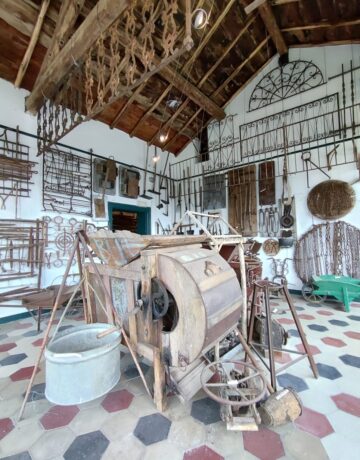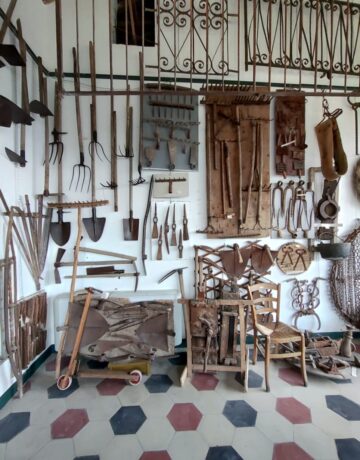Agriculture and Winemaking
 The right side of the Museum and the corridor are dedicated to agriculture, breeding and winemaking.
The right side of the Museum and the corridor are dedicated to agriculture, breeding and winemaking.
The municipal ensign of Bardineto itself, in fact, bears the motto “In campis vita” which literally means “Life is in the fields” to clear testify the centrality of this sector in our territory. It should be remembered that the first tractor arrived in Bardineto in 1956 and that until then all the work was carried out with the sole help of animal traction provided by cows, oxen, mules or horses.
Horses, being faster, were mainly used in transport to the nearby Ligurian Riviera or to lower Piedmont.
According to recent censuses for agriculture, the mountain area of the province of Savona alone, has lost about 70% of its cultivated land in the last 40 years.
Agricultural crops in the upper Val Bormida were, and still are limited, to the summer season only and the main crops are potatoes and wheat. It was only after the Second World War that the production of small fruits began and the cut flower one occurred only sporadically, because the flowering was late, compared to the more famous Riviera of flowers.
We must not forget the importance of the forests of beech (Fagus sylvatica L.) and chestnut (Castanea sativa Mill.) which provide timber and still employ many workers today.
In the corridor you can see:
– several sieves to divide the flour from the chaff and the bran in order to obtain different grades of refining,
– scythes for different types of hay cutting,
– pack saddles and yokes for draft animals,
– a strascia in iron (a particular collar for oxen that can also be made of shaped chestnut wood, thanks to its maceration in manure, to be the union between the yoke and the animal)
– muzzles for calves and oxen,
– different types of both two-handed and frame saws for wood.
The room on the right is mainly dedicated to the cultivation of the soil and meadows.
Ploughing is a deep tillage of the land that consists in overturning the clod. In all plough, you can therefore notice the coulter that cuts the portion of the soil and the ploughshare, called the ear (orecchio), that turns it over bringing the richer soil to the surface.
In the room, various types of ploughs can be observed: a detachable one that allowed transport to the most impervious or distant areas, a fixed ploughshare one that required working always in the same direction, thus necessitating a turn without ploughing each time and a reversible ploughshare one (a voltaorecchio) that allowed changing the direction of the plough, thereby avoiding unnecessary turns.
There are different types of harrows (levelling or toothed) that were used to chop the clods after ploughing or to level the fields after spreading manure.
Throughout the room there are different types of tools. In the center there is the simulation of a chestnut dryer, “teccio” in local dialect, a grain thresh and a chestnut threshing machine.
In a corner of the room there are tiles produced by several local furnaces.
In the front room you can find everything needed for winemaking. Although grapes were not a typical crop in the area, they were easily obtained from nearby Piedmont, and everyone made wine at home, sometimes with several families together. You can see barrels, a grapes press, demijohns, bottles (from local glassworks), and even wooden funnels.
